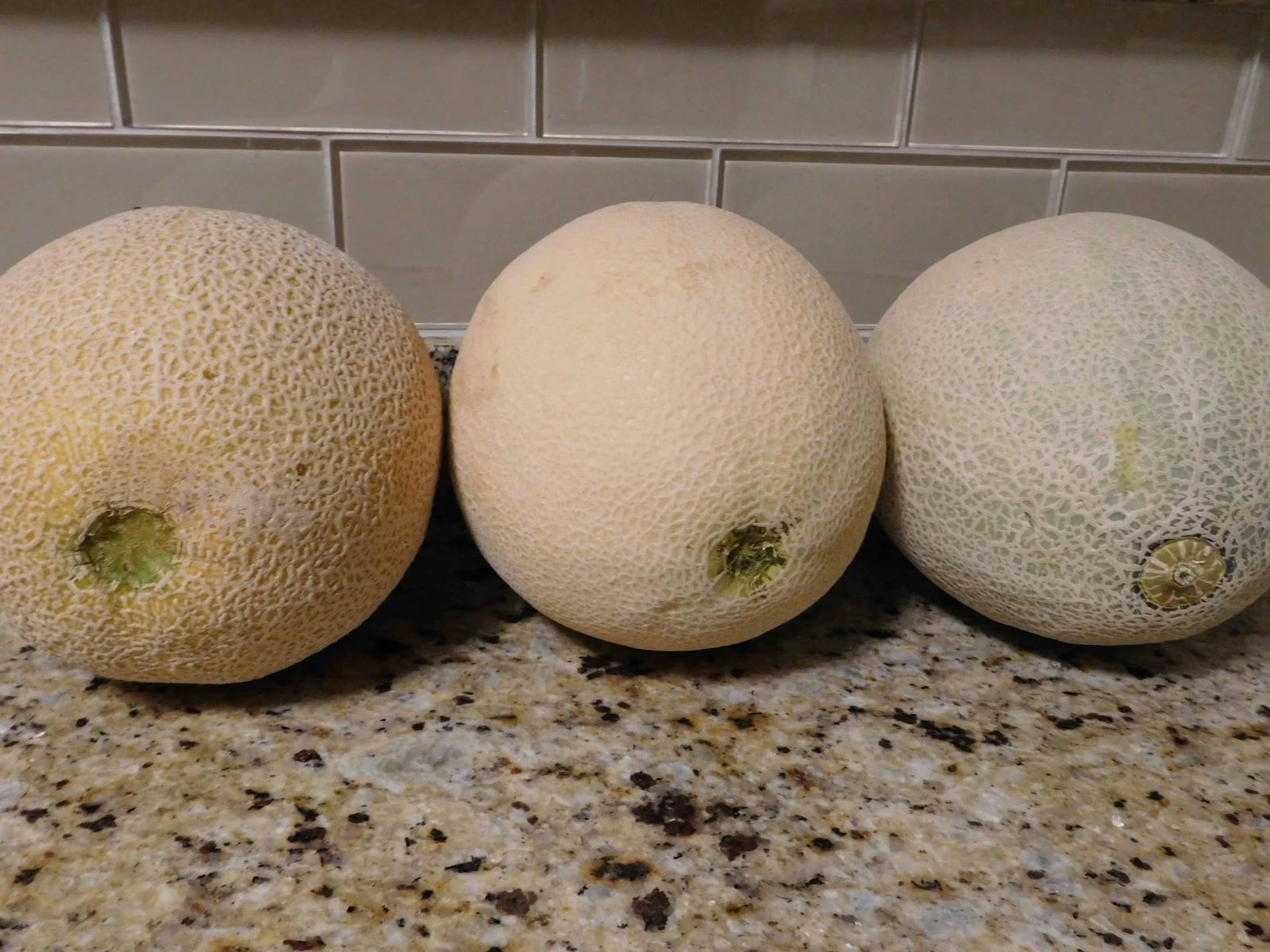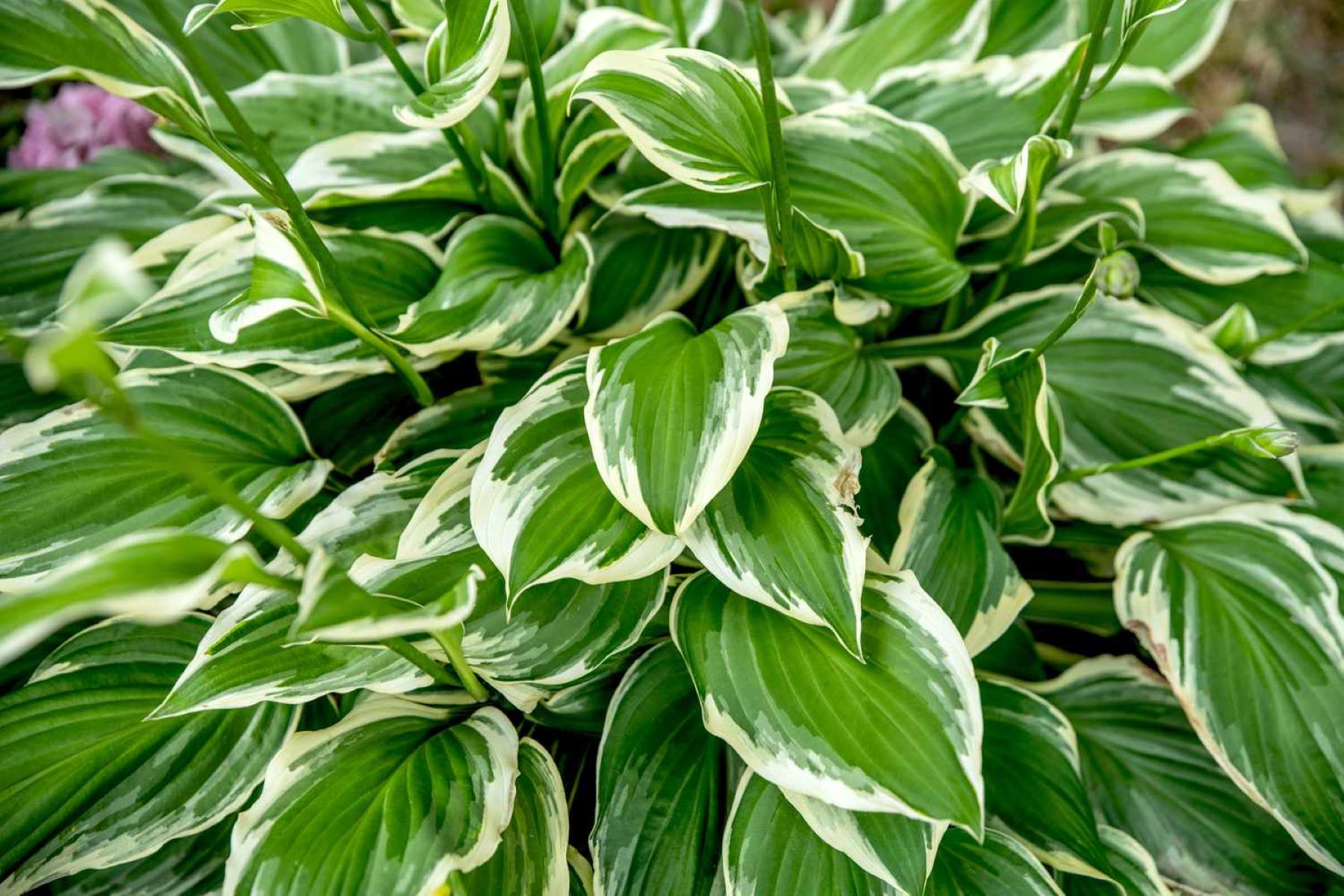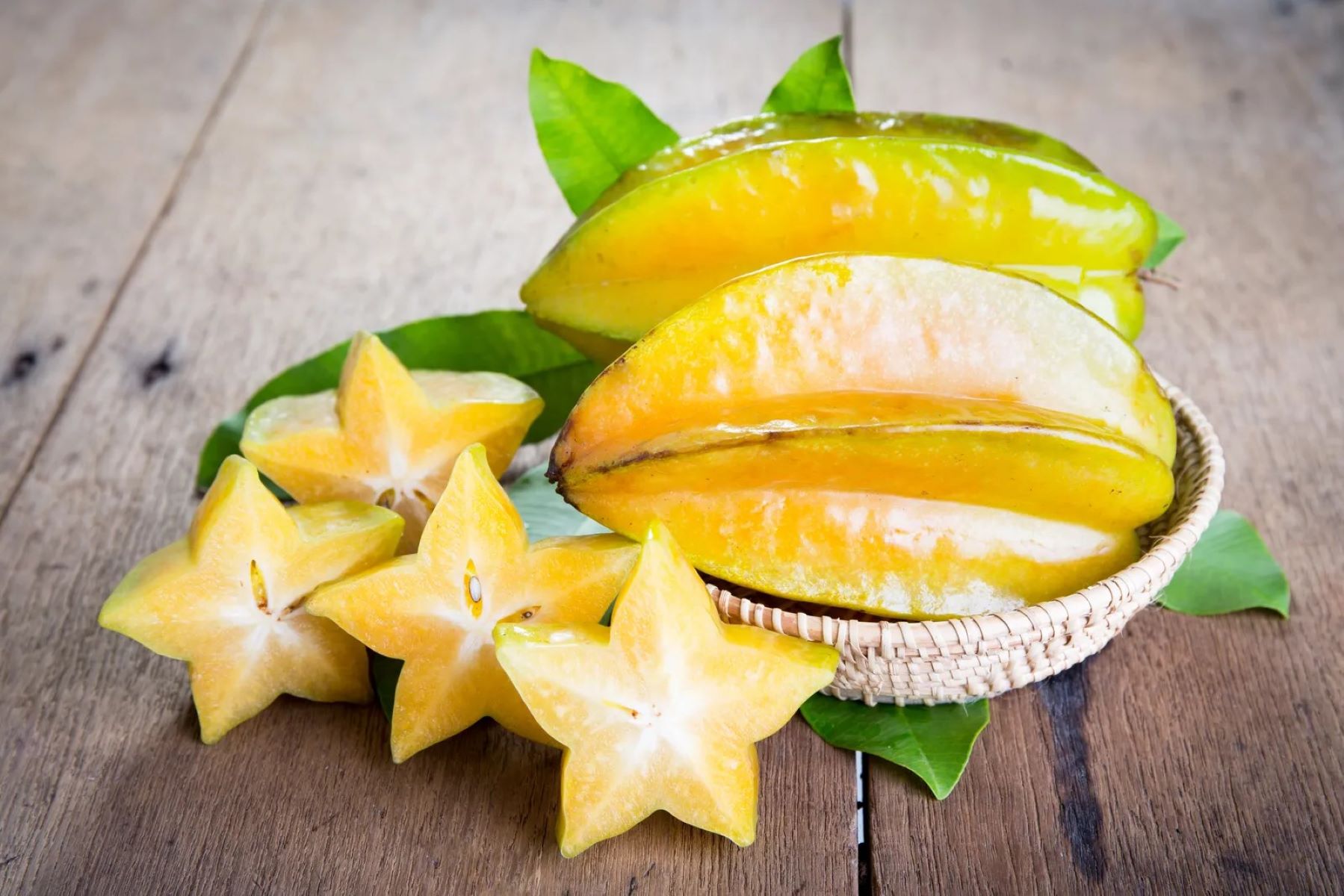Home>Food and Cooking>10 Foolproof Ways To Determine The Perfectly Ripe And Sweet Cantaloupe


Food and Cooking
10 Foolproof Ways To Determine The Perfectly Ripe And Sweet Cantaloupe
Published: February 19, 2024
Discover 10 foolproof tips for selecting the ripest, sweetest cantaloupe. Perfect your fruit-picking skills with our expert food and cooking advice.
(Many of the links in this article redirect to a specific reviewed product. Your purchase of these products through affiliate links helps to generate commission for Regretless.com, at no extra cost. Learn more)
Table of Contents
How to Choose the Perfectly Ripe Cantaloupe
Selecting a perfectly ripe and sweet cantaloupe can be a delightful experience, especially when you know what to look for. Here are ten foolproof ways to ensure you pick the best one:
-
Check the Stem End: The first step in choosing a ripe cantaloupe is to inspect the stem end. A ripe cantaloupe will have a slightly indented, smooth, and fragrant stem end. If the stem end is green and firm, it indicates that the fruit was picked prematurely and may not be fully ripe.
-
Smell the Aroma: A ripe cantaloupe emits a sweet, fragrant aroma from the blossom end. When you gently press the blossom end near the stem, a ripe fruit will release a subtle, sweet scent. If the aroma is absent or smells slightly musky, the cantaloupe may not be fully ripe.
-
Press the Skin: Applying gentle pressure to the skin of a cantaloupe can provide valuable insight into its ripeness. A ripe cantaloupe will yield slightly to pressure without feeling too soft. Avoid cantaloupes with overly soft or mushy spots, as they may be overripe.
-
Look for a Golden Color: A ripe cantaloupe typically exhibits a golden or yellowish hue under the netting. This color change indicates that the fruit has ripened fully and is ready to be enjoyed.
-
Consider the Weight: A ripe cantaloupe should feel heavy for its size. When you pick up a cantaloupe, it should feel substantial, indicating that it is filled with sweet, juicy flesh.
-
Listen for a Hollow Sound: Lightly tapping on the surface of a cantaloupe can provide valuable clues about its ripeness. A ripe cantaloupe will produce a deep, hollow sound, indicating that the flesh inside is juicy and flavorful.
-
Examine the Netting: The netting, or the raised ridges on the skin of a cantaloupe, can offer insights into its ripeness. A ripe cantaloupe will have well-defined, pronounced netting that stands out against the fruit's background color.
-
Avoid Soft Spots: When selecting a cantaloupe, be sure to avoid fruits with soft spots or areas of visible decay. These blemishes can indicate that the fruit is past its prime and may not be as flavorful.
-
Pay Attention to the Blossom End: The blossom end of a ripe cantaloupe should yield slightly when pressed, indicating that the fruit is at its peak ripeness. If the blossom end feels firm or shows signs of mold, it may not be fully ripe.
-
Taste Test the Cantaloupe: If you have the opportunity, tasting a small sample of the cantaloupe can be the ultimate test of its ripeness. A perfectly ripe cantaloupe will offer a burst of sweet, juicy flavor, confirming that it is ready to be enjoyed.
By following these ten foolproof methods, you can confidently select a perfectly ripe and sweet cantaloupe, ensuring a delightful and flavorful experience with this beloved fruit.
Read more: The Foolproof Trick To Determine A Ripe And Sweet Cantaloupe Without Wasting A Single Slice!
Check the Stem End
When it comes to choosing a perfectly ripe cantaloupe, one of the first steps is to inspect the stem end. This simple yet crucial technique can provide valuable insights into the fruit's ripeness and flavor. A ripe cantaloupe will exhibit specific characteristics at the stem end, guiding you towards a delicious selection.
Begin by examining the stem end of the cantaloupe. A ripe fruit will display a slightly indented, smooth, and fragrant stem end. This indentation indicates that the fruit naturally separates from the vine when it reaches its peak ripeness. The smoothness of the stem end further confirms that the cantaloupe has matured fully, as any green or firm remnants suggest premature picking.
As you run your fingers over the stem end, take a moment to inhale the sweet aroma that emanates from this part of the fruit. A ripe cantaloupe releases a subtle, sweet scent, signaling that it is ready to be enjoyed. This delicate fragrance is a testament to the fruit's natural sugars and delectable flavor, making it an enticing choice for your palate.
By paying close attention to the stem end, you can ensure that the cantaloupe you select is at its peak ripeness, promising a luscious and sweet taste experience. This simple yet effective method empowers you to make an informed decision, bringing home a perfectly ripe cantaloupe that is sure to delight your senses.
In summary, checking the stem end of a cantaloupe is a fundamental step in the selection process, offering valuable clues about the fruit's ripeness and flavor. Embracing this technique allows you to confidently choose a ripe and sweet cantaloupe, setting the stage for a delightful culinary experience.
Smell the Aroma
Engaging your sense of smell is a powerful tool when it comes to selecting the perfect cantaloupe. The aroma of a ripe cantaloupe can provide valuable insights into its sweetness and overall flavor profile. By incorporating this sensory experience into the selection process, you can elevate your fruit-picking journey to a new level of precision and enjoyment.
When you approach a display of cantaloupes, take a moment to focus on the fragrance emanating from the fruits. A ripe cantaloupe emits a distinct, sweet aroma that is often described as floral and tropical. As you gently press the blossom end of the cantaloupe near the stem, allow your senses to guide you. A ripe fruit will release a subtle, enticing scent that hints at the delectable sweetness and juiciness concealed within its vibrant flesh.
The aroma of a ripe cantaloupe is a result of the fruit's natural sugars reaching their peak, infusing the air with a tantalizing sweetness. This fragrant bouquet is a testament to the cantaloupe's ripeness, promising a delightful flavor experience with every juicy bite. In contrast, an unripe cantaloupe may lack this alluring aroma or emit a slightly musky scent, indicating that it has not yet reached its full potential in terms of sweetness and flavor.
By embracing the art of smelling the aroma, you can harness the power of your olfactory senses to identify the perfect cantaloupe. This sensory exploration adds an element of anticipation and discovery to the selection process, allowing you to connect with the fruit on a deeper level. As you breathe in the sweet, tropical notes wafting from the ripe cantaloupe, you are embarking on a sensory journey that culminates in a rewarding and flavorful culinary experience.
In summary, the act of smelling the aroma of a cantaloupe is a sensory adventure that enhances the fruit selection process. By allowing the sweet fragrance to guide your choice, you can confidently pick a ripe and flavorful cantaloupe, setting the stage for a memorable and delicious culinary indulgence.
Press the Skin
Pressing the skin of a cantaloupe is a simple yet effective technique that can provide valuable insights into the fruit's ripeness and overall quality. When you gently apply pressure to the surface of a cantaloupe, you can gauge its firmness and texture, allowing you to make an informed decision about its readiness for consumption.
A ripe cantaloupe will yield slightly to gentle pressure, offering a subtle give without feeling overly soft or mushy. This delicate balance of firmness and yielding indicates that the fruit has reached its optimal ripeness, with the flesh inside attaining a luscious and juicy consistency. By pressing the skin, you can assess the fruit's firm yet yielding nature, ensuring that it is primed for a delightful culinary experience.
Conversely, an unripe cantaloupe may feel excessively firm and resistant to pressure, signaling that it has not yet developed the desirable texture and juiciness associated with ripe fruit. On the other hand, an overripe cantaloupe may exhibit excessive softness or mushiness when pressed, indicating that it has surpassed its peak ripeness and may not offer the best flavor experience.
As you engage in the art of pressing the skin, pay attention to the subtle feedback provided by the cantaloupe's response to pressure. The ideal ripe cantaloupe will offer a gentle yet discernible yield, inviting you to savor its succulent and flavorful flesh. This tactile interaction with the fruit allows you to connect with its ripeness on a sensory level, empowering you to select a cantaloupe that promises a delectable taste experience.
In summary, pressing the skin of a cantaloupe is a tactile exploration that offers valuable clues about the fruit's ripeness and texture. By embracing this technique, you can confidently choose a ripe and flavorful cantaloupe, ensuring that each bite delivers a burst of sweet, juicy satisfaction.
Look for a Golden Color
When it comes to selecting a perfectly ripe cantaloupe, the visual cues offered by the fruit's exterior play a pivotal role in the decision-making process. One of the key indicators of a ripe cantaloupe is its distinctive golden or yellowish coloration beneath the netting. This visual transformation signifies that the fruit has undergone the ripening process, culminating in a delectably sweet and flavorful interior.
As you peruse the array of cantaloupes, pay close attention to the skin's color, particularly in the areas between the raised netting. A ripe cantaloupe will exhibit a vibrant golden or yellow hue in these regions, indicating that the fruit has reached its peak ripeness. This color change is a result of the natural sugars accumulating within the flesh, infusing the fruit with a tantalizing sweetness that is ready to be savored.
The golden coloration serves as a visual testament to the cantaloupe's journey from its initial stages of growth to the moment of perfect ripeness. This transformation signifies the fruit's readiness to offer a succulent and flavorful experience, making it an enticing choice for your culinary endeavors. By embracing this visual cue, you can confidently identify a ripe cantaloupe that promises a delectable taste adventure.
In contrast, a cantaloupe with predominantly green skin between the netting may indicate that it was harvested prematurely, potentially leading to a less developed flavor profile. Similarly, an overly pale or faded appearance may suggest that the fruit is past its prime, lacking the vibrant sweetness associated with ripe cantaloupes.
By incorporating the visual assessment of the golden color into your selection process, you can harness the power of sight to identify the perfect cantaloupe. This vibrant hue serves as a beacon of ripeness, guiding you towards a fruit that is poised to deliver a luscious and satisfying flavor experience. Embrace the allure of the golden color, and embark on a journey of selecting ripe and sweet cantaloupes that elevate your culinary creations.
Consider the Weight
When it comes to choosing a perfectly ripe cantaloupe, considering the fruit's weight is a crucial aspect that can provide valuable insights into its ripeness and overall quality. The weight of a cantaloupe serves as a tangible indicator of its juiciness and flesh density, offering a simple yet effective method for assessing its readiness for consumption.
A ripe cantaloupe should feel heavy for its size, indicating that it is filled with sweet, succulent flesh. When you pick up a cantaloupe, take a moment to gauge its weight in your hand. A ripe fruit will exhibit a substantial heft, signifying that it is brimming with flavorful juices and delectable flesh. This weightiness is a result of the fruit reaching its optimal ripeness, with the flesh attaining a juicy and satisfying consistency that promises a delightful taste experience.
In contrast, an underripe cantaloupe may feel lighter than expected for its size, suggesting that it has not yet developed the full complement of sweet, juicy flesh. This lighter weight can serve as a cue to exercise patience and allow the fruit additional time to ripen fully, ensuring that it reaches its flavor potential. On the other hand, an overripe cantaloupe may feel excessively heavy or dense, potentially indicating that it has surpassed its peak ripeness and may exhibit mushy or overly soft texture.
By considering the weight of a cantaloupe, you can engage in a tactile assessment that provides valuable clues about the fruit's ripeness and juiciness. This simple yet effective technique empowers you to make an informed decision, selecting a cantaloupe that is poised to deliver a succulent and flavorful experience with every delectable bite.
In summary, the weight of a cantaloupe serves as a tangible indicator of its ripeness and juiciness, offering valuable insights into the fruit's readiness for consumption. Embracing this method allows you to confidently choose a ripe and satisfying cantaloupe, ensuring that each bite is a testament to the fruit's luscious and flavorful nature.
Listen for a Hollow Sound
Engaging your sense of hearing can be a surprisingly effective method for determining the ripeness of a cantaloupe. When you lightly tap or thump on the surface of the fruit, you can listen for a distinct auditory cue that provides valuable insights into its internal composition and juiciness. This auditory exploration adds an element of intrigue to the selection process, allowing you to connect with the cantaloupe on a sensory level.
A ripe cantaloupe will produce a deep, resonant, and hollow sound when gently tapped, akin to a muffled drumbeat. This characteristic sound indicates that the flesh inside is firm, juicy, and bursting with flavor. The hollow sound is a result of the air pockets within the fruit, signifying that it is at the peak of its ripeness and ready to offer a succulent and satisfying taste experience.
Conversely, an unripe cantaloupe may emit a higher-pitched or dull thud when tapped, indicating that the flesh inside is still developing and may lack the desired juiciness and sweetness. This auditory feedback serves as a valuable indicator, prompting you to exercise patience and allow the fruit additional time to mature fully.
By listening for the hollow sound, you can engage in a sensory dialogue with the cantaloupe, allowing the fruit to communicate its readiness through a distinct and resonant tone. This method empowers you to make an informed decision, confidently selecting a cantaloupe that promises a delightful and flavorful culinary adventure.
In summary, listening for the hollow sound is a unique and engaging technique that offers valuable insights into the ripeness and juiciness of a cantaloupe. By embracing this auditory exploration, you can confidently choose a ripe and satisfying cantaloupe, ensuring that each bite is a testament to the fruit's luscious and flavorful nature.
Examine the Netting
The netting, or the raised ridges on the skin of a cantaloupe, offers a visual and textural landscape that can provide valuable insights into the fruit's ripeness and overall quality. When you embark on the journey of selecting a perfectly ripe cantaloupe, taking a closer look at the netting can guide you towards a delectable and satisfying choice.
A ripe cantaloupe will exhibit well-defined and pronounced netting that stands out against the fruit's background color. These raised ridges create a distinct pattern across the surface of the cantaloupe, offering a tactile experience that reflects the fruit's journey to peak ripeness. As you run your fingers over the netting, you can feel the subtle contours and textures that signify the fruit's readiness for consumption.
The pronounced netting serves as a visual testament to the cantaloupe's maturity, indicating that it has undergone the natural ripening process, resulting in a flavorful and juicy interior. The distinct ridges and valleys of the netting create a captivating visual display, inviting you to explore the fruit's surface and connect with its ripeness on a sensory level.
In contrast, a cantaloupe with indistinct or shallow netting may indicate that it was harvested prematurely, potentially leading to a less developed flavor profile. Similarly, overly prominent or exaggerated netting may suggest that the fruit is past its prime, lacking the subtle balance of textures associated with perfectly ripe cantaloupes.
By examining the netting, you can engage in a visual and tactile assessment that offers valuable clues about the fruit's ripeness and texture. This exploration allows you to connect with the cantaloupe on a deeper level, empowering you to confidently select a fruit that promises a succulent and flavorful experience with every delightful bite.
In summary, the netting of a cantaloupe serves as a visual and textural indicator of its ripeness, offering valuable insights into the fruit's readiness for consumption. Embracing this method allows you to confidently choose a ripe and satisfying cantaloupe, ensuring that each bite is a testament to the fruit's luscious and flavorful nature.
Avoid Soft Spots
When selecting a perfectly ripe cantaloupe, it is essential to pay close attention to the fruit's external appearance, particularly in the form of soft spots. These areas of visible decay or excessive softness can serve as indicators of the cantaloupe's overall quality and ripeness, guiding you towards a satisfying and flavorful choice.
Soft spots on a cantaloupe may manifest as areas of pronounced tenderness or discoloration, often indicating that the fruit has undergone deterioration or damage. By actively avoiding these soft spots, you can ensure that the cantaloupe you select is free from undesirable blemishes that may compromise its taste and texture.
When examining a cantaloupe for soft spots, take a methodical approach, gently running your fingers over the fruit's surface to detect any areas of abnormal softness or indentation. These soft spots may present themselves as slightly depressed regions or areas that yield excessively to pressure, signaling potential issues with the fruit's internal composition.
By steering clear of soft spots, you can safeguard your culinary experience, ensuring that the cantaloupe you choose is free from compromised areas that may detract from its overall flavor and juiciness. This discerning approach empowers you to select a cantaloupe that is visually and texturally pristine, setting the stage for a delightful and satisfying consumption experience.
In summary, avoiding soft spots on a cantaloupe is a fundamental aspect of the selection process, allowing you to prioritize the fruit's quality and ripeness. By embracing this method, you can confidently choose a ripe and satisfying cantaloupe, ensuring that each bite is a testament to the fruit's luscious and flavorful nature.
Pay Attention to the Blossom End
The blossom end of a cantaloupe holds valuable clues about the fruit's ripeness and readiness for consumption. This often-overlooked part of the fruit plays a significant role in determining its overall quality and flavor profile. By directing our attention to the blossom end, we can gain insightful information that enhances our ability to select a perfectly ripe and sweet cantaloupe.
When examining the blossom end, it is essential to consider its texture and appearance. A ripe cantaloupe will exhibit a slight yield when gently pressed near the blossom end, indicating that the fruit has reached its peak ripeness. This subtle give is a result of the fruit's natural sugars accumulating within the flesh, creating a tender and succulent texture that is synonymous with ripe cantaloupes. Conversely, an unripe cantaloupe may present a firm and resistant blossom end, signaling that the fruit is still in the process of maturing and may not offer the desired sweetness and juiciness.
In addition to texture, the blossom end can provide visual cues that reflect the cantaloupe's ripeness. A ripe fruit may display a small central crack or fissure near the blossom end, indicating that the fruit has naturally separated from the vine at the optimal moment of ripeness. This visual indicator serves as a testament to the cantaloupe's journey to maturity, offering a glimpse into the fruit's readiness for consumption.
Furthermore, the blossom end can offer insights into the fruit's aroma, providing a sensory dimension to the selection process. A ripe cantaloupe will emit a subtle, sweet scent from the blossom end, signaling the presence of delectable flavors and inviting aromatics. This fragrant bouquet serves as a compelling invitation to indulge in the fruit's succulent and flavorful flesh, adding an element of anticipation and delight to the selection experience.
By paying close attention to the blossom end, we can engage in a comprehensive assessment of the cantaloupe's ripeness, texture, visual cues, and aromatic qualities. This multifaceted approach empowers us to make an informed decision, confidently selecting a ripe and satisfying cantaloupe that promises a delectable taste adventure with every delightful bite.
Taste Test the Cantaloupe
The ultimate test of a cantaloupe's ripeness and sweetness lies in the exhilarating experience of a taste test. After meticulously examining the external indicators and engaging the senses through aroma, texture, and visual cues, the moment of truth arrives as you savor a small sample of the fruit. This final step in the selection process allows you to fully immerse yourself in the essence of the cantaloupe, embracing its flavor and juiciness with anticipation and delight.
As you take a bite of the cantaloupe, your taste buds are greeted by a burst of sweet, succulent goodness. The flesh yields tenderly to your palate, releasing a symphony of tropical and floral notes that dance across your senses. Each juicy morsel offers a harmonious blend of natural sugars, infusing your taste experience with a delightful sweetness that is both refreshing and satisfying.
The taste test serves as the ultimate confirmation of the cantaloupe's ripeness, validating the meticulous selection process that preceded it. With each delectable bite, you are rewarded with the essence of peak ripeness, as the fruit's luscious flesh delivers a gratifying and flavorful sensation that lingers on your palate.
The act of tasting the cantaloupe transcends mere consumption; it becomes a celebration of nature's bounty and the culmination of a journey to discover the perfect fruit. The flavors unfold gracefully, inviting you to savor the essence of ripe, sweet cantaloupe in its purest form. This sensory indulgence reaffirms the art of selecting a perfectly ripe cantaloupe, elevating the experience from mere fruit selection to a captivating and memorable culinary adventure.
In essence, the taste test is the grand finale of the cantaloupe selection process, offering a moment of pure enjoyment and satisfaction. With each delectable bite, you embrace the culmination of your efforts, reveling in the sweet, juicy essence of a perfectly ripe cantaloupe.













